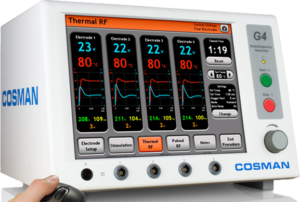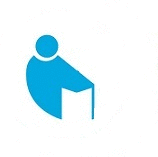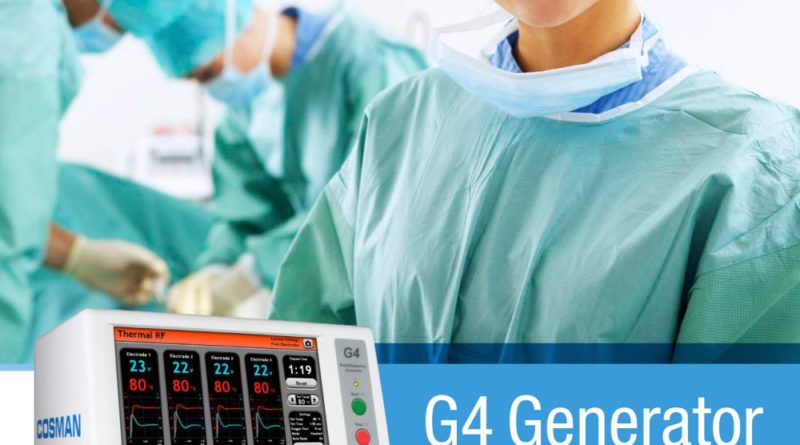Radiofrequency Ablation for Arthritis Pain
Radiofrequency neurotomy (also called radiofrequency ablation or lesioning) is a minimally invasive procedure that can provide lasting relief to those suffering from facet joint pain. In fact, multiple clinical studies show that radiofrequency neurotomy significantly reduces pain severity and frequency for 1 to 2 years in the majority of patients. Radiofrequency neurotomy involves applying heat to certain nerve pathways to “shut off” the transmission of pain signals to the brain. It is performed on an outpatient basis and requires only local anesthetic and mild sedation, alleviating the possible complications of open surgery and general anesthesia. It has a high success rate low complication rate.
Which Conditions Are Treated With Radiofrequency Ablation?
RFA can be used to help patients with chronic (long-lasting) low-back and neck pain and pain related to the degeneration of joints from arthritis.
What is the Benefits of Radiofrequency ablation?

- Pain relief for up to 2 years.
- Significant, longer lasting pain relief and less side effect compared to steroid injections.
- Low complication and morbidity rates.
- Appreciable pain relief compared to surgery: Nearly more than half of back pain sufferers are not helped by surgery.
- Greater range of motion.
- Lower use of analgesics.
- Improved quality of life.
- Short recovery time.
How many types of Radiofrequency Ablation?
There are two types:
- Thermal Radiofrequency in which the temperature of the tissue up to 80C.
- Pulsed Radiofrequency in which the temperature of the tissue not more than 45C.
How Long Does Pain Relief From Radiofrequency Ablation Last?
The degree of pain relief varies, depending on the cause and location of the pain. Pain relief from RFA can last from six months to 2 years and in some cases, relief can last for years. More than 70% of patients treated with RFA experience pain relief.
Is Radiofrequency Ablation Safe?
RFA has proven to be a safe and effective way to treat some forms of pain. It also is generally well-tolerated, with very few associated complications. There is a slight risk of infection and bleeding at the insertion site. Your doctor can advise you about your particular risk.
Who Should Not Get Radiofrequency Ablation?
As with any medical procedure, RFA is not appropriate for everyone. For example, radiofrequency ablation is not recommended for people who have active infections or bleeding problems. Your doctor can tell you if you should not have RFA.
How Do I Prepare for Radiofrequency Ablation?
To prepare for radiofrequency ablation treatment, you should take a few precautions, including:
- Do not eat within six hours of your appointment; however, you may have clear liquids until two hours before the procedure.
- If you have diabetes and use insulin, you must adjust the dosage of insulin the day of the procedure. Your primary care doctor will help you with this adjustment. Bring your diabetes medication with you so you can take it after the procedure.
- Continue to take all other medications with a small sip of water. Bring all medication with you so you can take it after the procedure.Please note: Do not discontinue any medication without first consulting with your primary or referring doctor.
- You will need to bring someone with you to drive you home after the procedure. You should not drive or operate machinery for at least 24 hours after the procedure.

What Happens During Radiofrequency Ablation?
You will meet with a doctor for an evaluation. If radiofrequency ablation is recommended, a doctor will explain the procedure in detail, including possible complications and side effects.
The doctor will also answer any questions you may have.
An intravenous (IV) line may be placed in a vein in your arm before the procedure and a local anesthetic and mild sedative may be used to reduce any discomfort during RFA. You may be awake during the process to aid in properly assessing the procedure. Ask your doctor about specifics beforehand.
After the local anesthesia (you will be awake but will not feel any pain) has been given, the doctor will insert a small needle into the general area where you are experiencing pain. Using X-ray or ultrasound, your doctor will guide the needle to the exact target area. A microelectrode is then inserted through the needle to begin the stimulation process.
During the procedure, your doctor will ask if you are able to feel a tingling sensation. The object of the stimulation process is to help the doctor determine if the electrode is in the optimal area for treatment.
Once the needle and electrode placement are verified, a small radiofrequency current is sent through the electrode into the surrounding tissue, causing the tissue to heat. You should not feel discomfort during the heating portion of the procedure.
What Happens After Radiofrequency Ablation?
Following radiofrequency ablation:
- You will stay in a recovery room for observation, where a nurse will check your blood pressure and pulse.
- A bandage will be placed over the injection site.
- The nurse will give you a beverage and review your discharge instructions with you.
- Someone must drive you home.
Can I Resume My Normal Activities After Radiofrequency Ablation?
You will have a few restrictions immediately following radiofrequency ablation:
- Do not drive or operate machinery for at least 24 hours after the procedure.
- You may resume your normal diet.
- Do not engage in any strenuous activity for the first 24 hours after the procedure.
- Do not take a bath for one to two days after the procedure; you may shower.
- You may remove any bandages in the evening before going to bed.
What Side Effects May I Have After Radiofrequency Ablation?
You may experience the following effects after RFA:
- Leg numbness:If you have any leg numbness, walk only with assistance. This should only last a few hours and is due to the local anesthesia given during the procedure.
- Mild back discomfort:This may occur when the local anesthetic wears off and usually lasts two or three days. Apply ice to the area the day of the procedure and moist heat the day after the procedure if the discomfort persists. You may also use your usual pain medications.
RFA Warning
If you feel severe pain at the injection site and notice swelling and redness, or increased leg weakness. A doctor must evaluate you for bleeding and injection complications..

